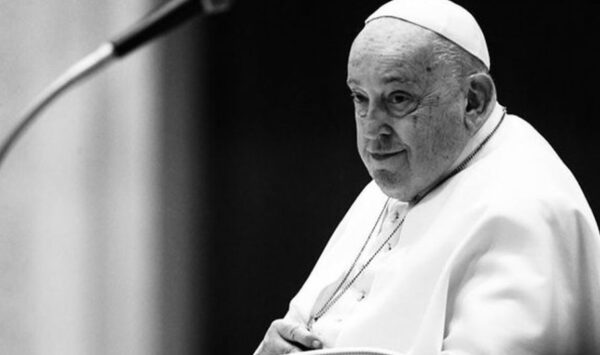
The death of a pope is always a moment of great significance, not just for Catholics but for the world.
One of the most striking traditions that accompany a pope’s passing is the unique and elaborate burial process.
For centuries, popes have been laid to rest in three nested coffins, each one symbolic, sacred, and deeply rooted in history.
But in 2024, Pope Francis made a bold change. He abolished the age-old three-coffin ritual, signalling a powerful shift in how the world’s most powerful religious leader should be remembered.) The tradition of burying popes in three coffins dates back many centuries, designed to reflect the pope’s spiritual role, earthly authority, and human mortality.
The tradition of burying popes in three coffins dates back many centuries, designed to reflect the pope’s spiritual role, earthly authority, and human mortality.
It became formalised over time, with each layer of the burial serving a specific symbolic and practical purpose.
By the time of Pope John Paul II’s funeral in 2005, the practice was firmly entrenched, watched by millions across the globe.
The symbolism behind the three coffins)
This is the innermost coffin, where the pope’s body is placed. Made from plain cypress wood, it represents humility and mortality, a reminder that even the most powerful spiritual leader is still a man who returns to dust. Inside, three bags of coins (silver, gold, and copper) are placed, each bag containing coins equal to the number of years he served. The coffin also includes a written biography (called a rogito) rolled into a metal tube, and a white silk veil over the pope’s face. The cypress coffin is sealed and tied with silk ribbons before being placed in the next casket.
2. The lead (or zinc) coffin
This coffin is both practical and symbolic. It is soldered shut to protect the pope’s remains and preserve important papal documents, including his broken papal seal. Engraved with his name, dates of pontificate, and often a skull and crossbones (a traditional memento mori), it serves as a reminder of the pope’s eternal spiritual legacy and mortality. This layer acts as an impenetrable shield against tampering or decay.
The final outer coffin, made from strong elm or oak, is used to protect the inner coffins and symbolise the dignity and strength of the papacy. It’s nailed shut with golden nails and marked with a golden cross and the papal coat of arms. Before sealing, a parchment listing the pope’s achievements is placed inside, preserved for posterity. Together, these three coffins encapsulated the pope’s life, death, and legacy in a deeply symbolic and durable way.
In 2024, Pope Francis approved major changes to papal funeral rites, including the elimination of the three-coffin burial. His updated directive, part of the revised Ordo Exsequiarum Romani Pontificis (Rite of Burial for Roman Pontiffs), emphasised humility, pastoral identity, and spiritual simplicity.
Instead of three coffins, Francis chose a single wooden coffin with a zinc lining, still preserving the body, but without the grandeur. He also declined to be displayed on an elevated bier, preferring a more humble setup that faced the congregation, accompanied simply by the Paschal candle.
Monsignor Diego Ravelli, the Vatican’s Master of Liturgical Ceremonies, explained the reforms were meant to:
In a 2023 interview, Francis shared that he wished to be buried at the Basilica of St. Mary Major, not inside the Vatican. The basilica holds personal meaning to him, as it is where he often prayed before and after every international trip, especially before the icon Salus Populi Romani. He said:
This final wish is consistent with a pontificate marked by a deep rejection of excess, and a desire to lead by example, even in death.

)







